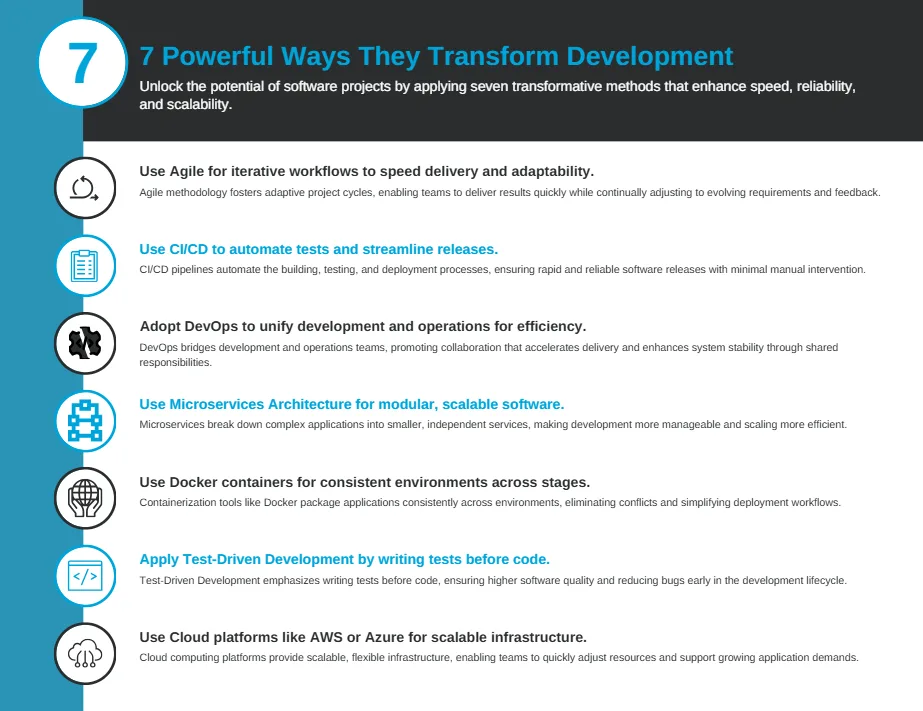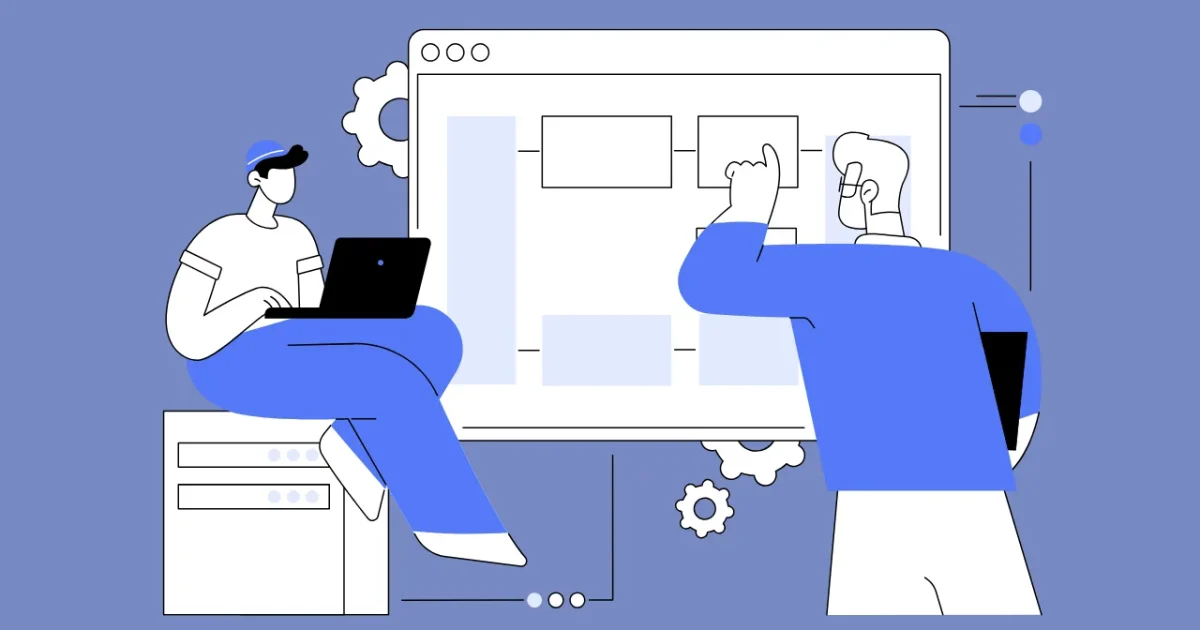Struggling to deliver high-quality apps on time without breaking the budget? You’re not alone. Many development team leads face the challenge of balancing speed, cost, and quality. Benefits of AI low-code platforms offer a game-changing solution, making app development faster, cheaper, and better.
What Are AI Low-Code Platforms?
AI low-code platforms combine artificial intelligence with low-code development tools. These platforms let developers build apps using visual interfaces and minimal coding, while AI automates tasks like code generation or error detection. Think of AI as a super-smart assistant who suggests shortcuts and catches mistakes before they happen.
AI in low-code is like having a seasoned developer looking over your shoulder, suggesting better ways to code in real time.”
— Jane Fraser, CTO at TechTrend Innovations, 2025.
7 Powerful Ways They Transform Development

1. Faster Development Timelines
AI low-code platforms drastically cut development time. AI automates repetitive tasks like generating UI layouts or database schemas. For example, a retail company used an AI app builder to create a customer loyalty app in two weeks instead of three months, saving 80% of the usual development time.
“With AI, we’ve seen development cycles shrink by up to 70%, allowing teams to focus on innovation.”
— Gartner Report, The Future of Software Development, 2025.
How It Works
AI analyzes project requirements and suggests pre-built templates. This speeds up the initial setup, letting developers focus on customization.
2. Improved App Quality
AI enhances app quality by catching errors early. For instance, an AI tool might flag inefficient logic in a payment processing app, suggesting optimized code that reduces transaction failures by 15%. This leads to more reliable apps without extra testing.
Real-World Example
A healthcare startup used an AI low-code platform to build a patient portal. The AI detected potential security flaws in the login system, improving data protection before launch.
3. Cost-Effective App Building
AI low-code platforms reduce development costs by automating complex tasks. Instead of hiring a large team, a small group can build apps with AI assistance. A logistics company saved $50,000 by using an AI app builder to create a tracking system, avoiding the need for external consultants.
“AI-driven low-code solutions can reduce development costs by 30-50% for mid-sized projects.”
— Forrester Research, AI in Software Development, 2025.
4. Enhanced Developer Productivity
AI boosts developer efficiency by automating routine tasks. For example, AI can generate API integrations in minutes, freeing developers to focus on creative problem-solving. A fintech firm reported a 40% productivity increase after adopting an AI low-code platform.
Practical Tip
Use AI tools like auto-code suggestions to reduce manual coding time. This lets developers tackle more complex challenges.
5. Simplified Collaboration for Teams
AI low-code platforms make it easier for non-technical team members to contribute. AI translates business needs into technical requirements, bridging the gap between developers and stakeholders. A marketing team collaborated with developers to build a campaign app in days, not weeks.
“AI low-code platforms empower cross-functional teams to work together seamlessly.”
— Dr. Emily Chen, AI Researcher at MIT, 2025.
6. Smarter Debugging and Maintenance
AI identifies bugs before they cause problems. For example, an AI tool might detect a memory leak in a mobile app during development, saving hours of debugging later. This leads to apps that are easier to maintain over time.
Case Study
A travel agency used an AI low-code platform to build a booking app. The AI flagged a database query issue, reducing crash rates by 20% post-launch.
7. Scalable Solutions for Growing Businesses
AI low-code platforms create apps that scale with your business. AI suggests optimizations for handling increased user loads. A startup used an AI platform to build an e-commerce app that scaled from 1,000 to 10,000 users without performance issues.
Why It Matters
Scalable apps save businesses from costly redesigns as they grow.
Choosing the Right AI Low-Code Platform
| Tool Name | Key Feature | Best For | Price | ROI | Cons/Issues |
|---|---|---|---|---|---|
| Mendix | AI-driven automation | Enterprise apps | $50/month | High: 60% faster delivery | Steep learning curve |
| OutSystems | AI code suggestions | Large teams | $100/month | Strong: 50% cost savings | Limited free tier |
| AppGyver | Visual AI builder | Startups | Free tier; $20/month | Moderate: 30% time savings | Fewer integrations |
| Bubble | AI-powered workflows | Non-coders | $25/month | High: 40% productivity boost | Complex UI customization |
Table: Comparing tools for cost-effective app building.
Step-by-Step Guide: Getting Started with AI Low-Code Platforms
- Choose a Platform: Pick a tool like Mendix or Bubble based on your team’s needs.
- Define Requirements: Outline your app’s purpose (e.g., a customer portal).
- Use AI Templates: Select AI-suggested templates to kickstart development.
- Customize with AI: Let AI suggest code or UI improvements.
- Test and Debug: Use AI tools to catch errors early.
- Deploy: Launch your app and monitor performance with AI analytics.
- Scale: Use AI to optimize for growth as user demand increases.
Visualizing AI Low-Code Benefits
Below is a bar chart showing the impact of AI low-code platforms on development metrics, based on industry data from 2025.
Looking Ahead: Why AI Low-Code Is the Future
The benefits of AI low-code platforms are transforming software development. They save time, cut costs, and improve app quality, making them essential for teams aiming to stay competitive. By leveraging AI for developer efficiency, businesses can deliver scalable, high-quality apps faster than ever.
Frequently Asked Questions (FAQs)
What Are the Main AI App Builder Advantages?
AI app builders speed up development, reduce costs, and improve quality. They automate tasks like code generation and debugging, making development accessible to smaller teams.
How Do AI Low-Code Platforms Improve Developer Productivity?
AI automates repetitive tasks, suggests optimizations, and simplifies collaboration. This lets developers focus on high-value work, boosting output by up to 40%.
Are AI Low-Code Platforms Cost-Effective?
Yes, they cut costs by reducing the need for large teams and speeding up development. Savings can reach 50% for mid-sized projects, per Forrester.
Can Non-Coders Use AI Low-Code Platforms?
Absolutely. Platforms like Bubble use visual interfaces and AI assistance, allowing non-coders to build apps with minimal training.
How Do AI Low-Code Platforms Ensure App Quality?
AI tools detect bugs, suggest efficient code, and optimize performance. This results in apps with fewer errors and better user experiences.




